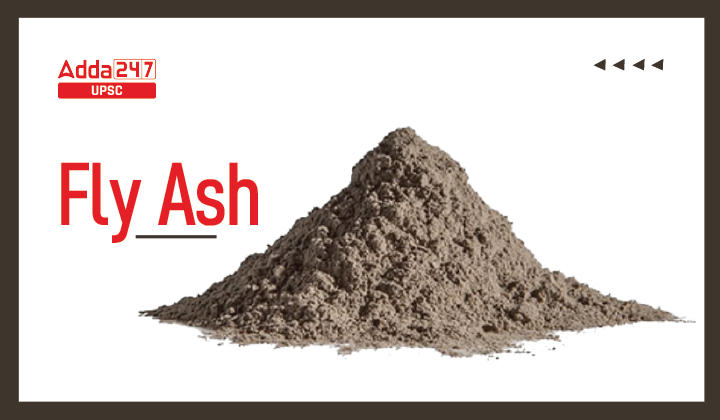Table of Contents
Fly Ash: Relevance for UPSC Exam
General Studies III- Environment.
Fly Ash: In News
- The National Green Tribunal (NGT) noted that there was an urgent need to augment the utilization and disposal of fly ash in Chhattisgarh.
What is Fly Ash?
- Fly ash is a by-product of coal combustion and contains Aluminium Silicate, SiO2, CaO, oxides of iron, magnesium and toxic metals like lead, arsenic, cobalt, and copper.
- India is set to double its power generation in the next decade and with coal being the biggest source of fuel for power generation, the problem of fly ash is going to increase too.
Fly Ash: Environmental Problems
- All the heavy metals found in fly ash—nickel, cadmium, arsenic, chromium, lead, etc—are toxic in nature and potentially can leech into the surrounding soil and enter food-chain as well.
- Fly ash gets easily ingested through respiration, which causes many diseases such as asthma, neurological disorders.
- Suspended fly ash in the air acts as a global warming agent and heats the earth’s surface.
- Fly ash settles on leaves and crops and reduces crop productivity.
- It pollutes the groundwater.
- Reduces visibility by creating dense fog in the winter season.
Fly Ash: Issues with management
- The government mandates that all coal power plants (CPPs) reach 100% utilization of fly ash and CPPs should give a certain amount of fly ash free of cost for MSMEs to manufacture bricks, tiles and rest of the fly ash should be sold to other industries.
- CPPs will have to maintain fly ash ponds to reduce its suspension in air but all these steps do little to mitigate the risks.
- The pricing of fly ash is increasingly becoming a contentious issue that is hampering its gainful utilization.
- The current approach of evaluating risks with fly ash disposal are very limited, and they may underestimate the true risks
- In spite of initiatives taken by the government, several non-governmental and research and development organizations for fly ash utilization, the level of fly ash utilization in the country is quite low at only 38% which is less than the global standards.
- Hence, rather than being utilized, fly ash is being stored despite warnings from regulators.
- Deposition in storage places has negative influences on water and soil because of their mineral composition as well as morphology and filtration properties.
- Ash-handling units are the biggest consumers of water in CPPs. The government advocates the designed ash-to-water ratios as approximately 1:5 for fly ash, but the observed ratios have been around 1:20.
- Certain states have discouraged the use of blended cement and fly ash bricks in public works.
Fly Ash: Way Forward
Issues can be addressed by
- Greater regulatory oversight and price control.
- Revision of cement blending standards.
- Research in improving fly ash quality.
- Reducing the cost of transportation.
- Provisions for overcoming information asymmetries.
- Incentivizing use in brick kilns for producing fly ash bricks.
- Overall sensitization of key decision-makers on the matter.
- Instead of dumping it on ash ponds, can be used for construction due to its reuse as pozzolan, and replacement of Portland cement by hydraulic cement.
- Due to its grain size distribution, enhanced strength permeability, it can be used to construct embankments at road construction, concrete dams like GHATGHAR DAM.
- Strong penalties for those production units who do not use proper filtration devices.
- Moving to renewable energy production away from coal-based thermal production.
Conclusion
- Utilization of Fly Ash is not only possible but also essential.
- “Fly Ash Mission of Government of India” is a slow but steady start, the pace of which needs to be ramped up.
- An honest effort is required by the concerned stakeholders to improve the perceptions of fly ash-based cement or concrete; increase its use, particularly for government works; and impart scientific knowledge about fly ash, its uses, and possible impacts.




 TSPSC Group 1 Question Paper 2024, Downl...
TSPSC Group 1 Question Paper 2024, Downl...
 TSPSC Group 1 Answer key 2024 Out, Downl...
TSPSC Group 1 Answer key 2024 Out, Downl...
 UPSC Prelims 2024 Question Paper, Downlo...
UPSC Prelims 2024 Question Paper, Downlo...
